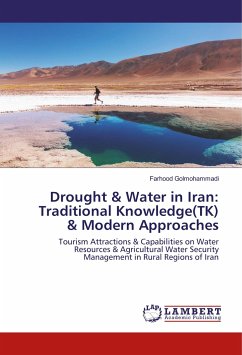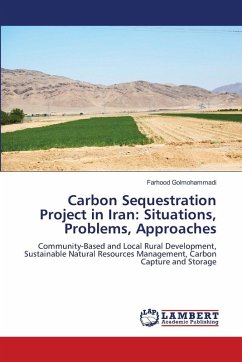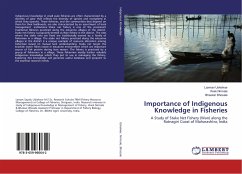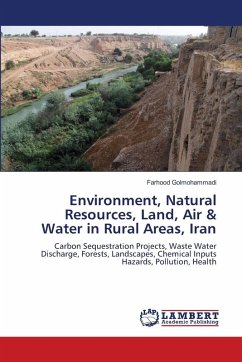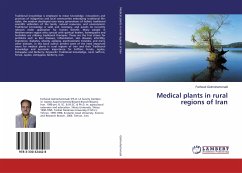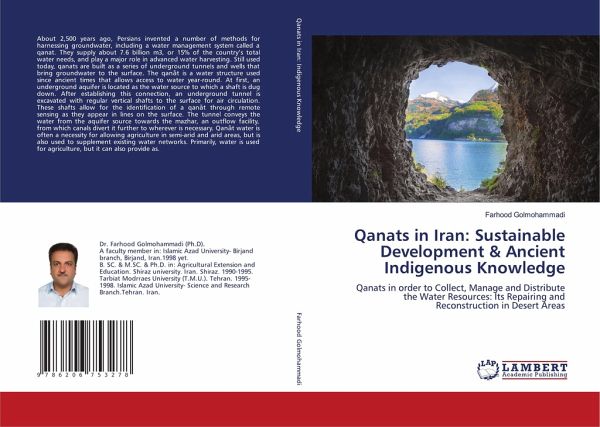
Qanats in Iran: Sustainable Development & Ancient Indigenous Knowledge
Qanats in order to Collect, Manage and Distribute the Water Resources: Its Repairing and Reconstruction in Desert Areas
Versandkostenfrei!
Versandfertig in 6-10 Tagen
56,99 €
inkl. MwSt.

PAYBACK Punkte
28 °P sammeln!
About 2,500 years ago, Persians invented a number of methods for harnessing groundwater, including a water management system called a qanat. They supply about 7.6 billion m3, or 15% of the country's total water needs, and play a major role in advanced water harvesting. Still used today, qanats are built as a series of underground tunnels and wells that bring groundwater to the surface. The qanat is a water structure used since ancient times that allows access to water year-round. At first, an underground aquifer is located as the water source to which a shaft is dug down. After establishing th...
About 2,500 years ago, Persians invented a number of methods for harnessing groundwater, including a water management system called a qanat. They supply about 7.6 billion m3, or 15% of the country's total water needs, and play a major role in advanced water harvesting. Still used today, qanats are built as a series of underground tunnels and wells that bring groundwater to the surface. The qanat is a water structure used since ancient times that allows access to water year-round. At first, an underground aquifer is located as the water source to which a shaft is dug down. After establishing this connection, an underground tunnel is excavated with regular vertical shafts to the surface for air circulation. These shafts allow for the identification of a qanat through remote sensing as they appear in lines on the surface. The tunnel conveys the water from the aquifer source towards the mazhar, an outflow facility, from which canals divert it further to wherever is necessary. Qanat water is often a necessity for allowing agriculture in semi-arid and arid areas, but is also used to supplement existing water networks. Primarily, water is used for agriculture, but it can also provide as.



